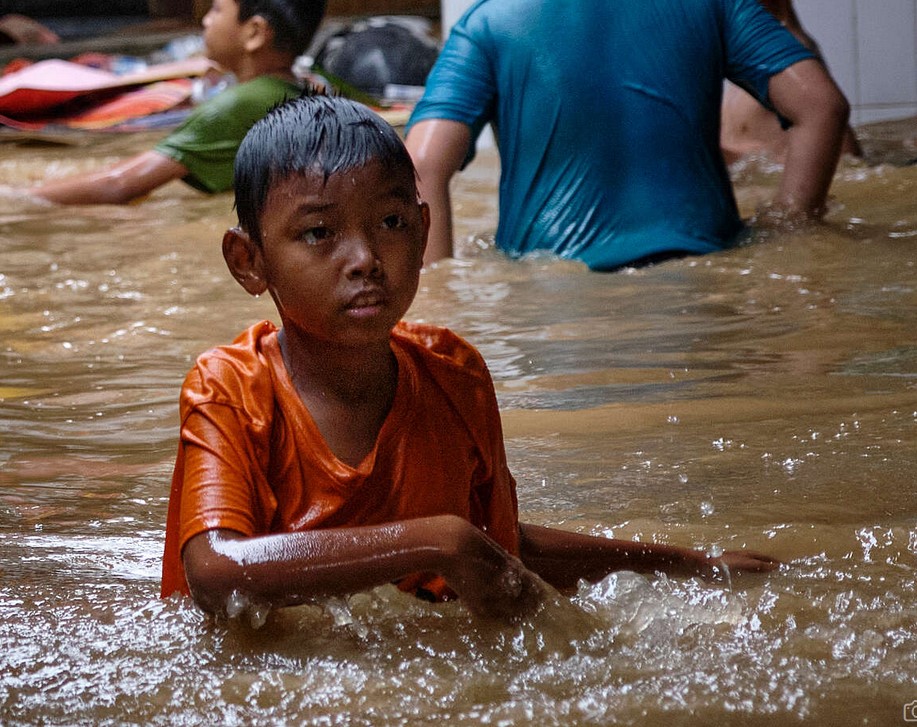We are regularly asked by our clients – across industries and markets worldwide – why we always include environmental considerations into our human right projects. For us, at Ksapa, it’s very connected. We see how working on climate action supports human rights. And how working improving human rights supports climate action. Despite the growing consensual support we actually have coming through growing converging consistency of regulatory frameworks, standards and stakeholder expectations, this linkage between climate and human rights seems to require a bit of explanation. Here’s an attempt.
1. What is the Relation Between Climate and Human Rights ?
The relationship between climate and human rights is multifaceted and interconnected. Climate change has significant implications for the enjoyment of human rights, as it affects various aspects of human well-being and exacerbates existing vulnerabilities. Here are some key points highlighting the climate-human rights relationship:
- Right to Life and Health: Climate change poses risks to human life and health through increased frequency and intensity of natural disasters, extreme weather events, and the spread of diseases. These impacts can lead to loss of life, displacement, and adverse health effects, thereby undermining the fundamental rights to life, health, and access to healthcare.
- Right to Food and Water: Climate change impacts agricultural productivity, alters ecosystems, and disrupts water availability, leading to food and water insecurity. This jeopardizes the right to adequate food and clean water, particularly for vulnerable communities reliant on agriculture and natural resources.
- Right to Housing and Livelihoods: Rising sea levels, extreme weather events, and other climate-related factors contribute to the destruction of homes, infrastructure, and livelihoods. Displacement and forced migration, driven in part by climate change, can result in violations of the right to adequate housing and the right to work and earn a living.
- Right to Indigenous Peoples: Indigenous communities often have deep connections to their lands, which are threatened by climate change impacts such as deforestation, land degradation, and loss of biodiversity. These impacts undermine the rights of indigenous peoples to self-determination, cultural integrity, and traditional livelihoods.
- Right to Participation and Information: Climate change decision-making processes and policies can have significant implications for human rights. Ensuring meaningful participation of all stakeholders, including marginalized groups, in decision-making processes related to climate change is essential for upholding the right to participation and access to information.
- Climate Justice and Equity: Climate change disproportionately affects vulnerable populations, including low-income communities, marginalized groups, women, and children. Addressing climate change from a human rights perspective requires an emphasis on equity, justice, and addressing underlying structural inequalities to ensure that the burden and benefits of climate action are distributed fairly.
- Interdependence of Rights: The impacts of climate change cut across various human rights, highlighting the interdependence and indivisibility of rights. Efforts to address climate change and protect human rights should be mutually reinforcing, recognizing that the realization of one right often depends on the fulfillment of others.
Recognizing the interlinkages between climate change and human rights is crucial for developing effective climate policies, adaptation strategies, and mitigation efforts. Integrating human rights principles into climate action can help ensure that climate responses are equitable, inclusive, and centered on the well-being and dignity of all individuals and communities.
2. What are the Legal Obligations Connecting Climate and Human Rights for Companies?
The Preamble to the Paris Agreement to the UNFCCC (1/CP. 21) expands upon this language calling on States, when taking action to address climate change, to “respect, promote and consider their respective obligations on human rights”. This is not a universally binding legal obligation specifically connecting climate change and human rights for companies. That being said, whenever companies claim to support the Paris Agreement, or commit to implement Science Based Targets to calibrate their climate strategy, it sounds consistent – or binding – to also abide by the language of the Paris Agreement’s Preamble.
Also, it’s important to note that there are legal frameworks and emerging trends that highlight the responsibility of companies in addressing climate change impacts on human rights. Here are some key aspects to consider:
- National Laws and Regulations: Laws and regulations vary across jurisdictions, and some countries have enacted legislation requiring companies to consider and address environmental and social impacts, which can include climate change and its effects on human rights. Companies may be legally obligated to conduct environmental impact assessments, follow specific reporting requirements, or comply with sector-specific regulations that address climate-related risks and their impact on human rights. In 2022, Brazil’s Supreme Court became the first judicial body to recognize the Paris Agreement as a human rights treaty. Canada, India, France, Germany and many other jurisdictions have legal instruments connecting corporate climate disclosure and human rights. Indeed, be it the French due diligence law, the german supply chain act or Norway’s Transparency Act all include in their scope not only human rights damages but also damages to the environment. European Union’s CS3D underway is clearly heading to the very same direction in 2023. Indeed , in its initial version only a report on companies strategies to address principal adverse impact on human rights was made mandatory for companies. But, recently the JURI of the European Parliament, revise it to couple the human rights report with a report on the company climate action plan to align with the 1,5 C target under the Paris Agreement.
- National Action Plans and Policies: Some countries have developed national action plans or policies on business and human rights that outline expectations for companies, including those related to climate change. These frameworks may encourage or require companies to take steps to mitigate climate-related human rights impacts within their operations, supply chains, and communities.
- Voluntary Commitments and International Guidelines: While not legally binding, companies may choose to align their actions with international guidelines and frameworks that address the intersection of climate change and human rights. For example, the United Nations Guiding Principles on Business and Human Rights provide a globally recognized framework for companies to respect human rights throughout their operations, including in relation to climate change.
- Sector-Specific Initiatives: In certain sectors, voluntary industry standards and initiatives may set expectations for companies regarding climate change and human rights. For instance, in the extractive industry, the International Council on Mining and Metals (ICMM) has developed guidelines that emphasize the integration of human rights considerations, including climate-related impacts, into companies’ operations. Audit standards the like SMETA were initially developed to promote ethical and socially responsible supply chains. They now also include environmental considerations (SMETA audit protocols: Chapter 2 & 4)
- Litigation and Judicial Precedents: Some legal cases have been filed against companies alleging that their actions or emissions have contributed to climate change, thereby violating human rights. While the outcome of these cases can vary, they highlight the potential for courts to establish legal precedents linking climate change and human rights responsibilities of companies. There are 2,000+ climate-related litigation cases underway in the world today. Around one-quarter of these were filed between 2020 and 2022.
It’s important to note that legal obligations can evolve over time as new legislation, court decisions, and international agreements are developed. Additionally, different jurisdictions may have varying levels of legal requirements and expectations for companies regarding climate change and human rights. Therefore, it is crucial for companies to stay informed about the evolving legal landscape. Most importantly, companies are encouraged to proactively address their climate-related impacts on human rights, considering both legal obligations and emerging best practices. That’s exactly what we promote at Ksapa – and why we encapsulate strong environmental considerations across our human right programs.
3. Are Sustainability Standards Connecting Human Rights and Climate Together?
Sustainability standards and frameworks also increasingly recognize the interconnection between human rights and climate change. These standards aim to address environmental, social, and governance (ESG) factors holistically, acknowledging the intrinsic relationship between climate and human rights impacts. While specific standards may vary, here are a few examples of sustainability frameworks that connect human rights and climate:
- UN Global Compact: The UN Global Compact is a voluntary initiative that encourages businesses to adopt sustainable and socially responsible policies. It includes ten principles covering areas such as human rights, labor, environment, and anti-corruption. Principle 1 specifically highlights the importance of businesses supporting and respecting human rights, including in the context of climate change.
- Sustainable Development Goals (SDGs): The SDGs, adopted by the United Nations, provide a global framework for sustainable development. The goals integrate environmental, social, and economic dimensions, emphasizing the need for inclusive and sustainable development. The SDGs recognize the relationship between climate change (SDG 13) and human rights (SDG 16), among others.
- Equator Principles: The Equator Principles are a risk management framework for financial institutions, particularly regarding project financing. These principles consider a range of environmental and social risks, including climate change and human rights impacts. Financial institutions that adopt the Equator Principles commit to assessing and addressing these risks in their project financing decisions.
- International Finance Corporation (IFC) Performance Standards: The IFC Performance Standards are a set of environmental and social standards that guide the private sector in managing risks and impacts associated with development projects. These standards emphasize the importance of identifying and addressing climate change risks and potential human rights impacts throughout project lifecycles.
- Global Reporting Initiative (GRI): GRI provides a widely used reporting framework for organizations to disclose their sustainability performance. The GRI Standards require organizations to report on various aspects of sustainability, including human rights and climate change impacts. Organizations are encouraged to consider the links between these two areas in their reporting.
- Climate Justice and Human Rights Declarations: Several non-binding declarations and statements have been made by international organizations and civil society groups to emphasize the relationship between climate change, human rights, and climate justice. These declarations highlight the need for climate action that upholds human rights, promotes equity, and considers the rights and needs of vulnerable communities.
Conclusions
In fact, the main reason why companies find it difficult to embrace climate and human rights in one same agenda is rooted to how they are organized – operating all too often in silos. People working on human rights put a strong emphasize on people through human resources activities, responsible supply chain programs, community engagement investments. People working on climate issues put a strong emphasize on data collection, technologies and processes through climate strategy programs, energy efficiency activities or decarbonation strategy investments. They barely connect when it ultimately comes to reporting ESG data all together in one same platform.
Now is time really to open silos, and develop more collaborative spaces. Human rights people have climate and environmental responsibilities. Climate and environmental people have human rights responsibilities. The overarching goal is to foster sustainability practices that recognize and address the interdependence between these two crucial areas, ensuring that climate action respects human rights and supports social well-being.
Author of several books and resources on business, sustainability and responsibility. Working with top decision makers pursuing transformational changes for their organizations, leaders and industries. Working with executives improving resilience and competitiveness of their company and products given their climate and human right business agendas. Connect with Farid Baddache on Twitter at @Fbaddache.





